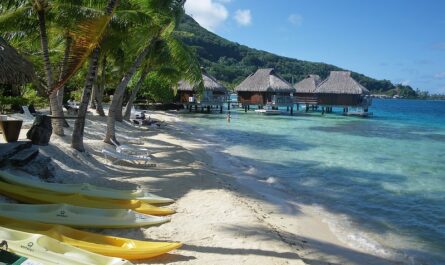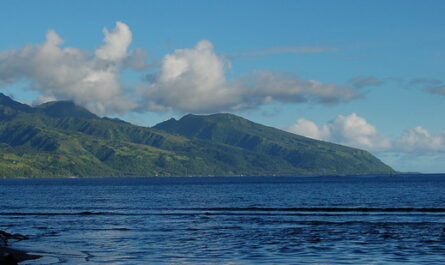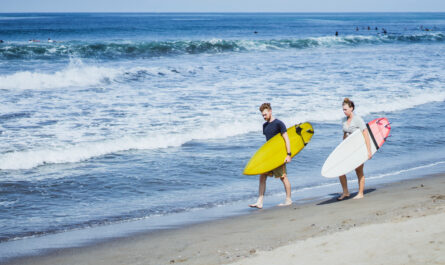The Big Island of Hawaii is a destination like no other, offering a diverse landscape that encompasses everything from volcanic craters and black sand beaches to lush rainforests and arid deserts. For nature lovers, the island’s national parks and protected areas provide an opportunity to explore and experience the stunning natural beauty and rich cultural heritage of Hawaii.
The Big Island is home to some of the most famous national parks in the United States, each unique in its ecosystem, geological wonders, and Hawaiian history. These parks protect not only the island’s distinctive landscapes but also its native flora and fauna, many of which are found nowhere else on Earth. Here’s an in-depth guide to the top national parks and natural sites on the Big Island of Hawaii.
1. Hawai’i Volcanoes National Park: Witness the Power of Active Volcanoes
Perhaps the most well-known national park in Hawaii, Hawai’i Volcanoes National Park covers over 500 square miles and is home to two of the world’s most active volcanoes: Mauna Loa and Kīlauea. This park offers an awe-inspiring look at volcanic landscapes, from lava flows and craters to steam vents and sulfur banks.
- Kīlauea Caldera and Halemaʻumaʻu Crater: One of the park’s highlights, Kīlauea Caldera is a massive volcanic crater that has been erupting continuously for over three decades. Halemaʻumaʻu Crater, located within the caldera, is considered sacred by Native Hawaiians as the home of Pele, the goddess of fire and volcanoes. Recent eruptions have created a dynamic landscape with lava lakes and fields that change constantly.
- Thurston Lava Tube: This underground tunnel was formed by ancient lava flows and allows visitors to walk through a cooled lava tube. The surrounding rainforest creates a surreal experience, blending the dark volcanic rock with lush greenery.
- Chain of Craters Road: This scenic drive takes visitors past volcanic craters, lava flows, and stunning coastal cliffs. The road ends at the sea, where lava has spilled over the edge, creating new land. Visitors can witness firsthand the power of volcanic activity to shape and reshape the island.
- Pu’u Loa Petroglyphs: This site is home to thousands of ancient Hawaiian petroglyphs, symbols carved into the rock by Native Hawaiians. The petroglyphs offer a glimpse into the cultural history of the island’s early inhabitants and their connection to the land.
Visitor Tips:
- Due to the ongoing volcanic activity, some trails and areas may be temporarily closed for safety. Check with the park’s visitor center for the latest updates.
- Bring a flashlight if you plan to explore the Thurston Lava Tube, as parts of the tube can be quite dark.
- Stay on marked trails to protect both the environment and yourself from unstable ground or fragile lava formations.
2. Pu’uhonua o Hōnaunau National Historical Park: A Place of Refuge
Located on the Kona Coast, Pu’uhonua o Hōnaunau National Historical Park is a unique cultural site that served as a place of refuge for ancient Hawaiians. In the Hawaiian kapu (taboo) system, those who broke a law could seek sanctuary at a pu’uhonua, or place of refuge, where they would be forgiven and absolved of their sins.
- Great Wall: A massive stone wall, 10 feet high and 17 feet thick, surrounds the park and served as a boundary between the royal grounds and the pu’uhonua. This wall, built centuries ago, is an impressive example of Hawaiian engineering.
- Hale o Keawe Heiau: This temple was once a royal mausoleum that housed the remains of Hawaiian chiefs. Although the original structure no longer stands, a reconstruction has been built using traditional materials and techniques.
- Sacred Coconut Groves: The park is home to coconut palms that were planted centuries ago and served as a vital food source. The groves also play a role in traditional Hawaiian storytelling and rituals.
- Fishing Ponds: The ancient Hawaiians built large fishponds to raise fish sustainably. These ponds can still be seen today, demonstrating the islanders’ advanced understanding of aquaculture.
Visitor Tips:
- Be respectful of the sacred nature of the site; refrain from climbing on walls or entering restricted areas.
- Take time to read the informational signs placed throughout the park to learn about Hawaiian culture and history.
- The park offers a self-guided tour, but joining a ranger-led tour can provide a more in-depth understanding of the site’s cultural significance.
3. Kaloko-Honokōhau National Historical Park: A Blend of Nature and Culture
Kaloko-Honokōhau National Historical Park, located near Kona, offers visitors a chance to experience Hawaii’s coastal beauty while learning about ancient Hawaiian practices. The park encompasses lava rock fields, pristine beaches, and cultural sites that tell the story of the Native Hawaiians who lived and thrived here for centuries.
- Honokōhau Beach: This stunning beach is home to green sea turtles, which can often be seen basking on the shore. Honokōhau Beach is a perfect spot for snorkeling, swimming, or simply relaxing while enjoying the tranquil surroundings.
- Fishponds and Fishtraps: The ancient Hawaiians created fishponds and fishtraps to sustain their communities. These structures are still visible today and offer insight into the sophisticated aquaculture practices of early Hawaiians.
- Aiʻōpio Fishtrap: One of the most impressive fishtraps in the park, Aiʻōpio Fishtrap was built using lava rocks to trap fish as the tide receded. This ingenious design allowed the community to harvest fish without disturbing the marine environment.
- Petroglyphs and Ancient Trails: The park contains petroglyphs and trails that were used by ancient Hawaiians. The petroglyphs depict scenes from everyday life, as well as symbols that hold spiritual meaning.
Visitor Tips:
- Wear reef-safe sunscreen if you plan to swim or snorkel at Honokōhau Beach to protect the delicate coral reefs and marine life.
- Respect the wildlife, especially the endangered green sea turtles, by maintaining a safe distance and refraining from touching or feeding them.
- Start your visit at the visitor center to gain an overview of the park’s significance and history.
4. Hakalau Forest National Wildlife Refuge: A Birdwatcher’s Paradise
While not a national park, Hakalau Forest National Wildlife Refuge is a must-visit for nature lovers and birdwatchers. Located on the windward side of Mauna Kea, this protected area was established to conserve Hawaii’s native bird species and unique plant life.
- Native Birds: The refuge is home to several endangered Hawaiian bird species, including the ʻIʻiwi, ʻApapane, and ʻAkiapolaʻau. These birds, with their bright plumage and melodic songs, are found only in Hawaii’s high-altitude forests.
- Native Flora: Hakalau Forest contains many native plant species, including ʻōhiʻa trees, which have brilliant red flowers, and koa trees, whose wood is highly prized. The native vegetation supports a delicate ecosystem that is critical to the survival of Hawaii’s bird species.
- Conservation Efforts: The refuge actively works to remove invasive species, which pose a threat to native plants and animals. Conservationists and volunteers participate in efforts to restore the forest to its natural state.
Visitor Tips:
- The refuge is remote and only accessible with a permit or through a guided tour. Be sure to plan ahead if you wish to visit.
- Bring binoculars for birdwatching, as many species are best observed from a distance.
- Due to the sensitive nature of the ecosystem, follow all guidelines to avoid disturbing the habitat.
5. Mauna Kea: A Sacred and Scientific Destination
Mauna Kea is not a national park, but it is a significant cultural and natural site that draws visitors interested in both its spiritual importance and astronomical research. Standing at over 13,800 feet, Mauna Kea is Hawaii’s tallest mountain and a place of reverence for Native Hawaiians.
- Astronomical Observatories: The summit of Mauna Kea is home to some of the world’s most advanced telescopes, taking advantage of the mountain’s clear, dry atmosphere. Stargazing tours and observatory visits offer breathtaking views of the night sky.
- Sacred Significance: Mauna Kea holds deep cultural significance for Native Hawaiians, who consider it a sacred place and the realm of the gods. Respect for the mountain’s cultural importance is crucial, and visitors are encouraged to be mindful of its spiritual value.
- Mauna Kea Visitor Information Station: Located at an elevation of 9,200 feet, the station provides educational programs, guided hikes, and stargazing events. Visitors can learn about Mauna Kea’s geology, ecosystem, and cultural history.
Visitor Tips:
- Due to the high altitude, visitors should acclimate at the Visitor Information Station before going to the summit.
- Dress warmly, as temperatures at the summit can drop significantly, even during the summer months.
- Check for access updates, as road closures and restricted areas are common due to weather or cultural observances.
Conclusion: Embracing the Wonders of Big Island’s National Parks
From the fiery landscapes of Hawai’i Volcanoes National Park to the serene beaches and fishponds of Kaloko-Honokōhau, the Big Island’s national parks offer a journey through some of the world’s most diverse and breathtaking landscapes. Each park is a testament to Hawaii’s rich cultural heritage, incredible biodiversity, and the delicate balance between human presence and environmental conservation.
For nature lovers, the Big Island’s national parks provide endless opportunities to connect with Hawaii’s unique ecosystems and experience the spirit of aloha through responsible and respectful exploration.



